By Joe Berk
Here’s something different: A visit to the New Jersey State Police Museum in West Trenton, New Jersey.

I’d seen references to the NJSP Museum on Facebook and elsewhere, and being back in New Jersey a short while ago, Susie and I found ourselves casting about for things to do. Ordinarily, our visits to the Garden State include the same stops: Lunch at the Shrimp Box in Point Pleasant (awesome seafood), every once in a while a visit to Bahr’s in the Highlands (another spot for awesome food), maybe a trip to Asbury Park (think Bruce Springsteen and Danny Devito), a few of the Soprano’s filming locations, the Rutgers University campus, the Old Mill in Deans, New Hope (just across the Delaware River), and a few of our other standard stops. This time we wanted to explore a bit more, and I put the New Jersey State Police Museum on the list. I knew that it had a couple of vintage motorcycles, and I figured it would probably have a few firearms on display. Guns and motorcycles fit the ExhaustNotes theme.
The New Jersey State Police is a paramilitary, well-disciplined, and impressive organization. I’d call it a STRAC outfit (in Army slang, STRAC is an acronym derived from skilled, tough, and ready around the clock). One thing I’ve never seen is an out-of-shape NJ State Trooper.
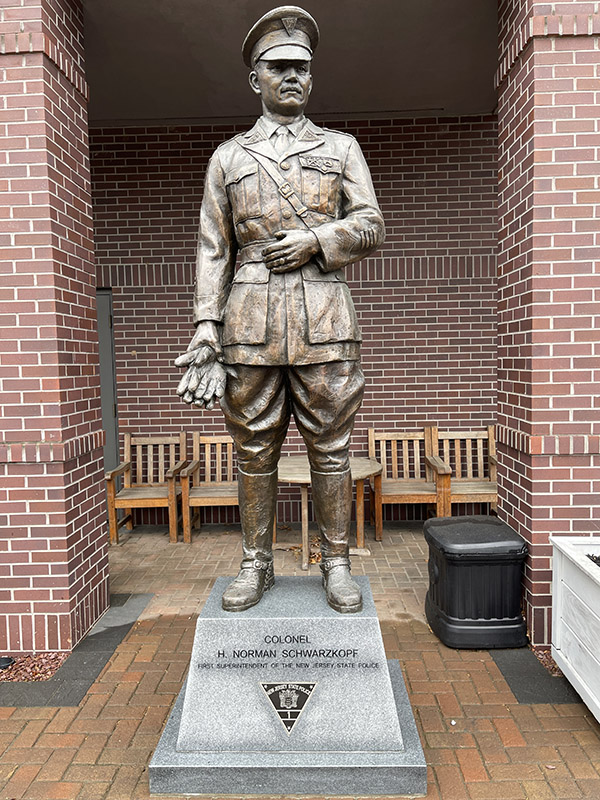
New Jersey State Troopers are the Marines and Green Berets of the police world. That didn’t happen accidentally: The guy who formed the NJ State Police a century ago was none other than Colonel H. Norman Schwarzkopf. Not the guy who led US troops during the first Persian Gulf War in 1991 (that H. Normal Schwarzkopf was his son), but the original. Colonel Schwarzkopf was a US Military Academy graduate, and when he formed the NJ State Police, his vision was a military organization with the same look as that instilled at West Point. I’d say he succeeded.
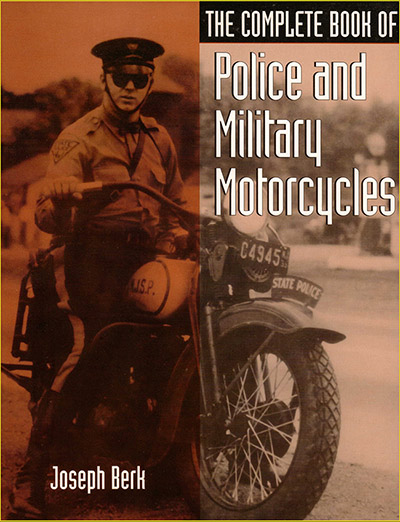
I touched on the NJ State Police when I wrote The Complete Book of Police and Military Motorcycles. The cover photo shows Captain Ralph Dowgin on a 1934 Harley-Davidson. Captain Dowgin went on to command Troop D, the NJSP branch that patrolled the New Jersey Turnpike and the Garden State Parkway. We also wrote about Jerry Dowgin, Captain Dowgin’s son and a friend of mine who owned a 1966 Honda 305 Scrambler (a bike featured here and in a Motorcycle Classics magazine story).
Getting to the NJSP Museum was relatively easy, although the location was tucked away on the NJSP Headquarters grounds. We just plugged the name into Waze, and after meandering through a bunch of small streets in West Trenton, we were at a manned gate. The location is essentially a military compound. The nice young lady at the gate called ahead to confirm the Museum was open (it was), and then she raised the gate. We followed her instructions and the map she gave to us, and we were there. We were the only visitors, so we had the place to ourselves.
The NJ State Police guns story is an interesting one.
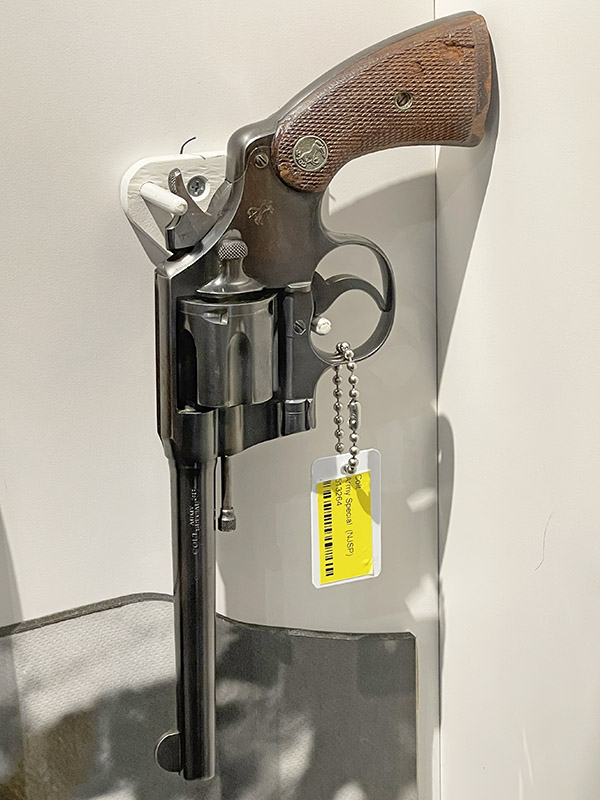
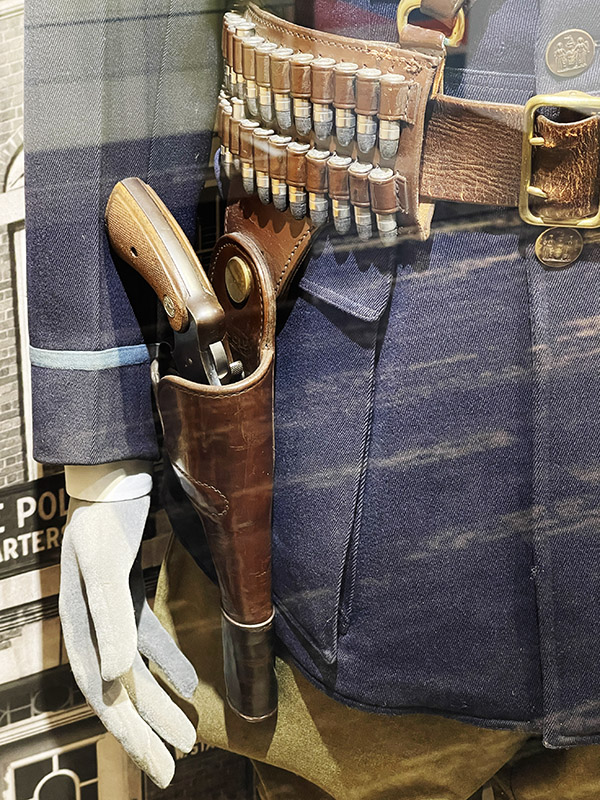

Back in the day, the NJ State Police also issued the .38 Smith and Wesson Combat Masterpiece to their Troopers, which was a 6-shot revolver with adjustable sights. This one has a 6-inch barrel. I’ve owned a few of the Smith and Wesson revolvers; they are good guns.
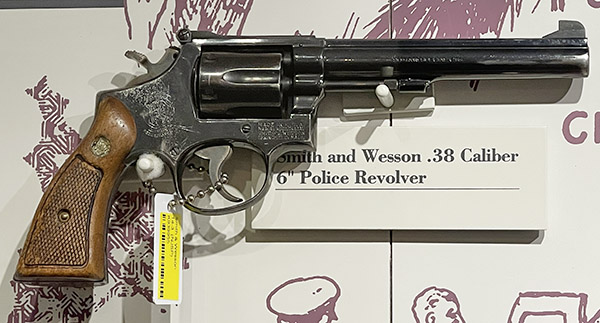
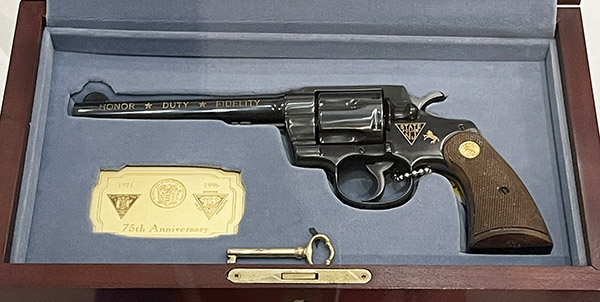

In those early days, the NJ State Police also used 1903A1 Springfield rifles. I have a 1903A1 in near perfect condition and I’ve written about shooting cast and jacketed bullets in it, and the rifle’s complex rear sight. They are nice rifles and they are collectible. Truth be told, though, I can shoot tighter groups with my 91/30 Mosin Nagant.
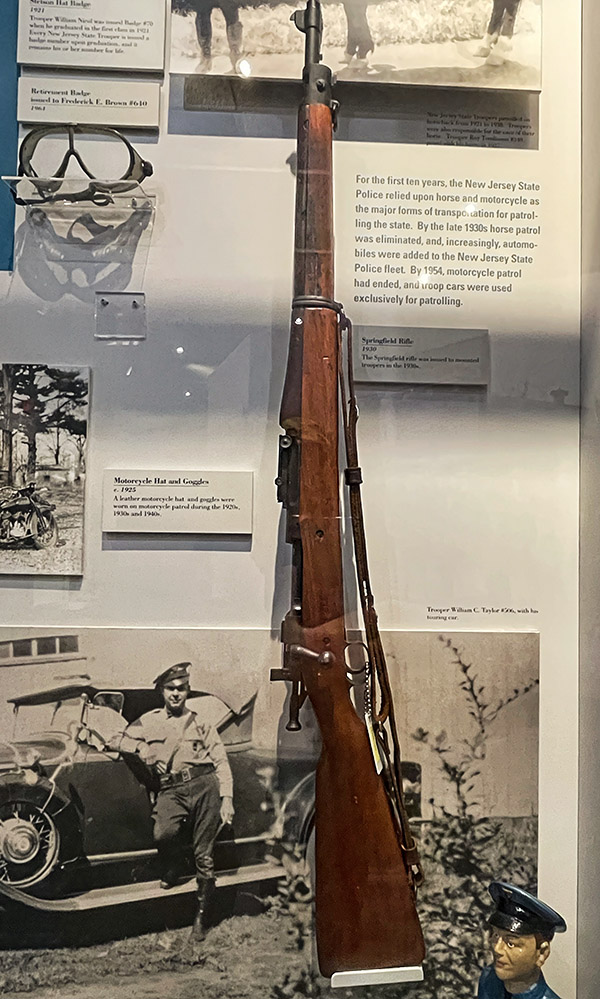
Later in their history, the NJ State Police used Ruger .357 Magnum double-action, stainless steel revolvers.
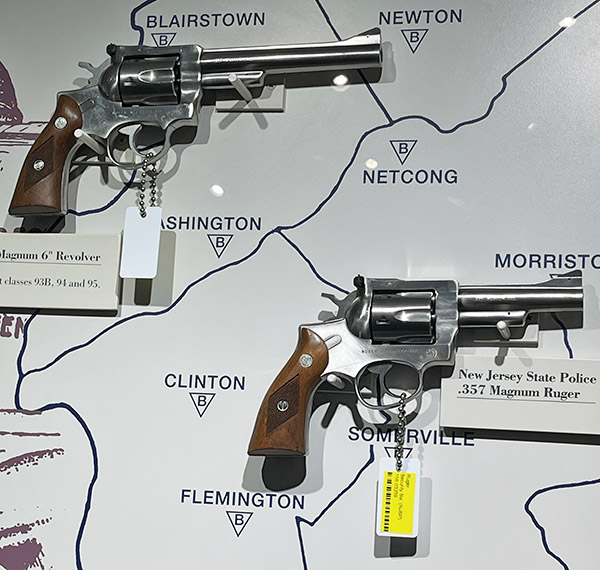
During the 1980s, many police departments made the switch from revolvers to 9mm semi-automatic handguns. Not all choices worked well for the NJ State Police. One firearm, the H&K 9mm squeeze cocker, was particularly troublesome. The NJSP experienced numerous accidental discharges. Sometime after that, the NJSP went to SIG handguns. That didn’t work out, either. When the NJ State Police made the switch to SIGs, the handguns had reliability issues, and when SIG couldn’t fix the problems, the NJ State Police sued SIG. It seemed like the NJSP couldn’t catch a break in their quest to adopt a 9mm handgun. Ultimately, the NJSP went with Glock 9mm handguns. That worked out well.


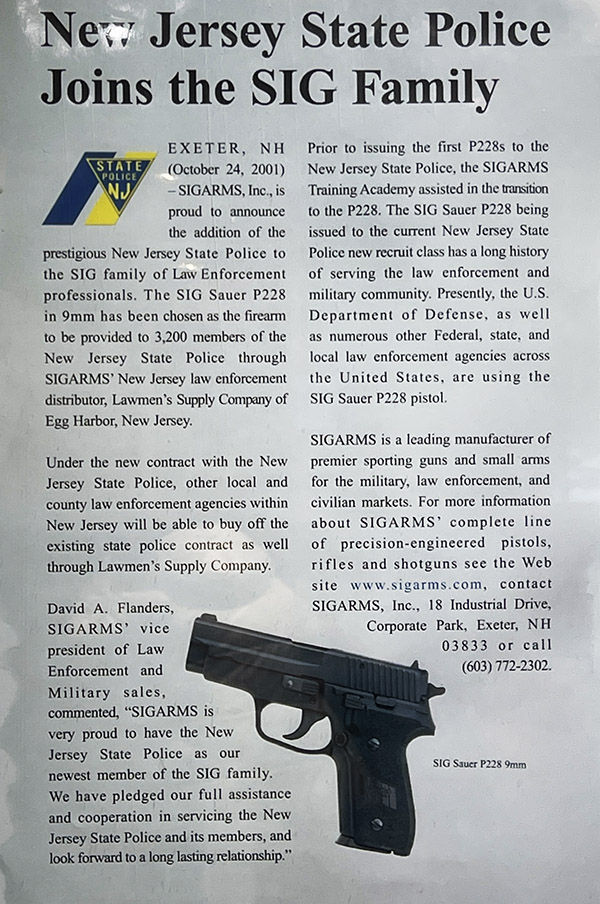
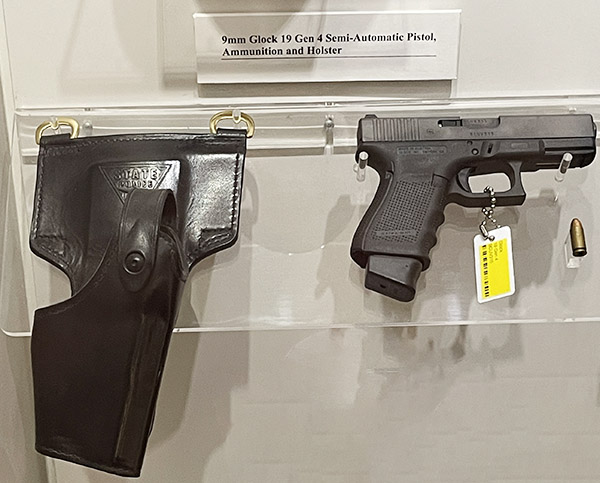
The firearms exhibits also displayed other long guns used by the New Jersey State Police.


The New Jersey State Police also have a rich tradition using motorcycles, although they no longer use motorcycles for patrol duties. The NJSP has a few modern Harleys, but these are used for ceremonial functions only. In the early days, the NJSP used motorcycles year round, and in New Jersey, the winters can get cold, wet, snowy, and icy. Back in the day, the NJSP used tire chains when it snowed. That’s hard to imagine.
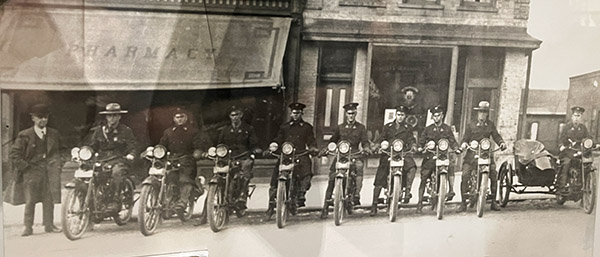

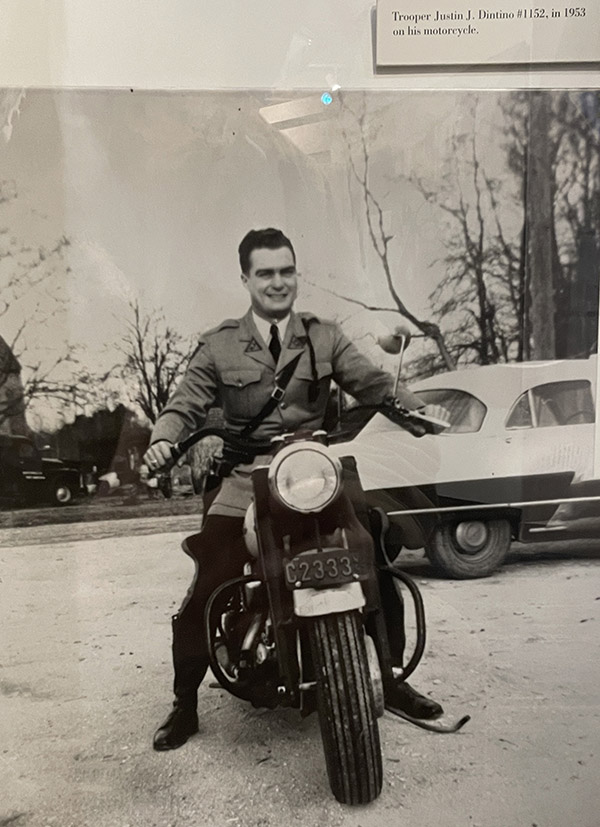
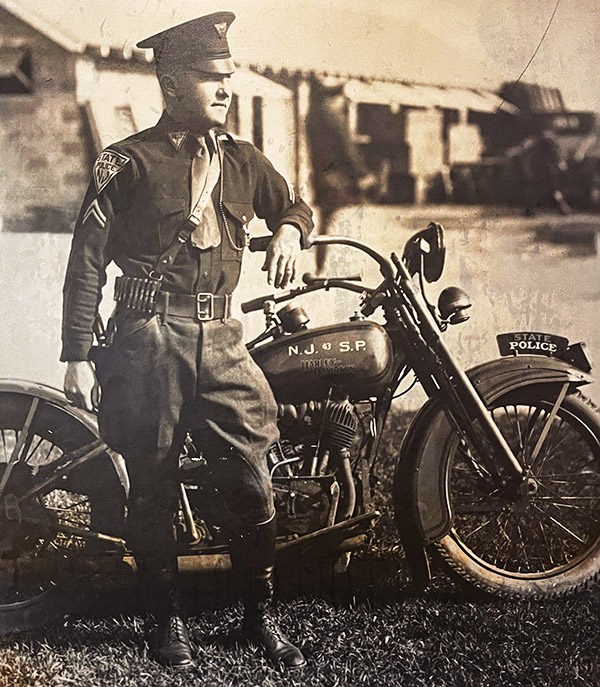
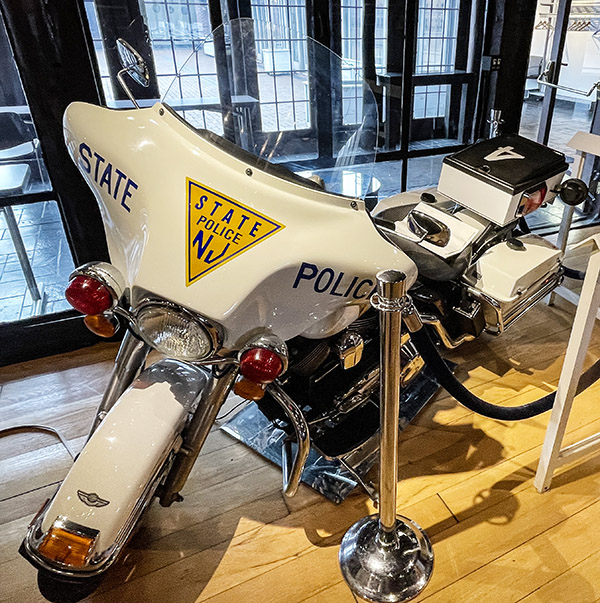
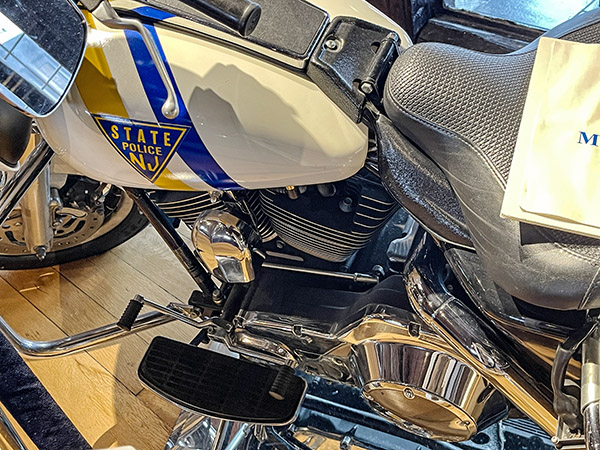
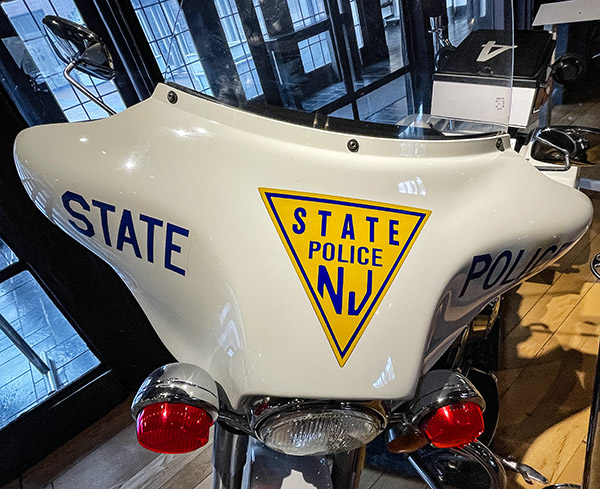
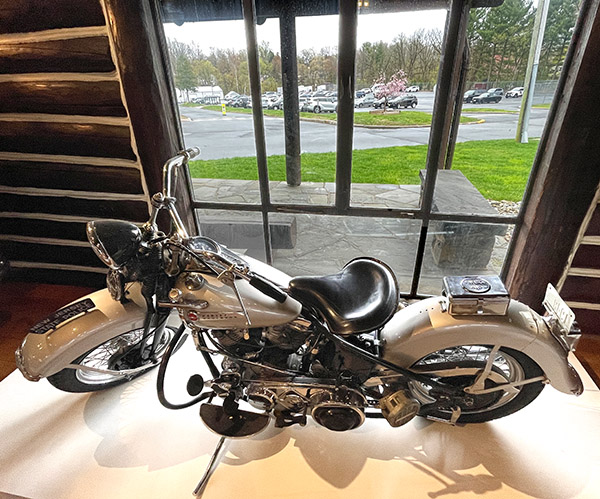

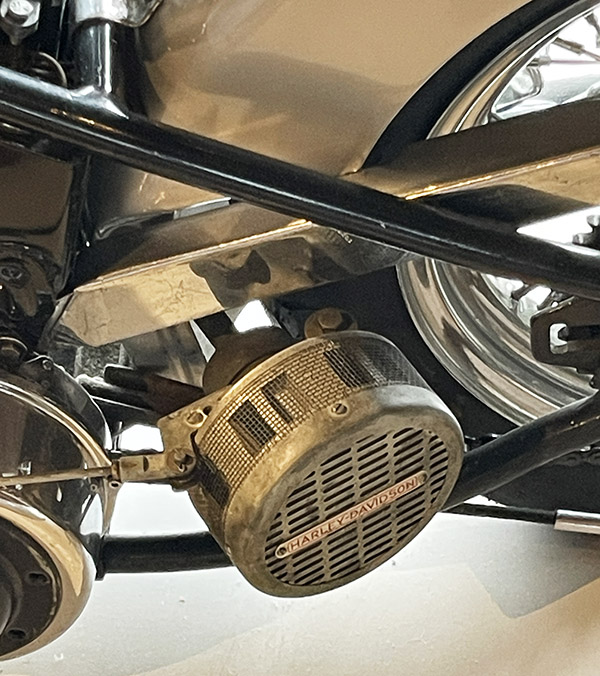


One of the NJSP Museum’s exhibits was a wanted poster for a particular person. That wanted poster is for Joanne Chesimard, who is a fugitive being sheltered by Cuba. Chesimard participated in the murder of New Jersey State Trooper Werner Foerster in May 1973. The murder occurred very near where my family lived. Another NJ State Trooper had pulled over a car driven by Clark Squire (Chesimard was also in the car). Foerster arrived in a backup patrol car. A gun battle ensued, Foerster was murdered, and Squire escaped into the woods just to the east of our home.
Squire remained at large, hiding in the woods, for several days. We thought he had escaped from the area, but police officers continued the search. Squire finally surrendered to a local police officer. We believed that if the NJ State Police had found him, Squire would not have been brought in alive (and that would have been okay with everyone I knew).
Squire, Chesimard, and a third person were convicted of murdering Foerster and sentenced to life in prison. Chesimard subsequently escaped and found her way to Cuba, where she lives in freedom to this day (sheltered by a Cuban government that refuses to extradite her to the United States). Incredibly, when Barack Obama wanted to recognize the Castro regime and lift sanctions on Cuba, returning Chesimard to serve out her sentence was not part of the deal. She remains on the FBI’s Most Wanted List to this day.

In yet another disappointment related to this Foerster murder, Squire was recently released on parole (50 years into what should have been a life sentence). I know. It’s not right.
To get back to the main topic of this blog, if you ever find yourself in New Jersey you might want to spend a few hours visiting the New Jersey State Police Museum in West Trenton. It’s free, it’s a great museum, and it’s an opportunity to learn a lot about one of the most elite police organizations in America. We enjoyed it. You will, too.
Join our Facebook ExNotes page!
Never miss an ExNotes blog:

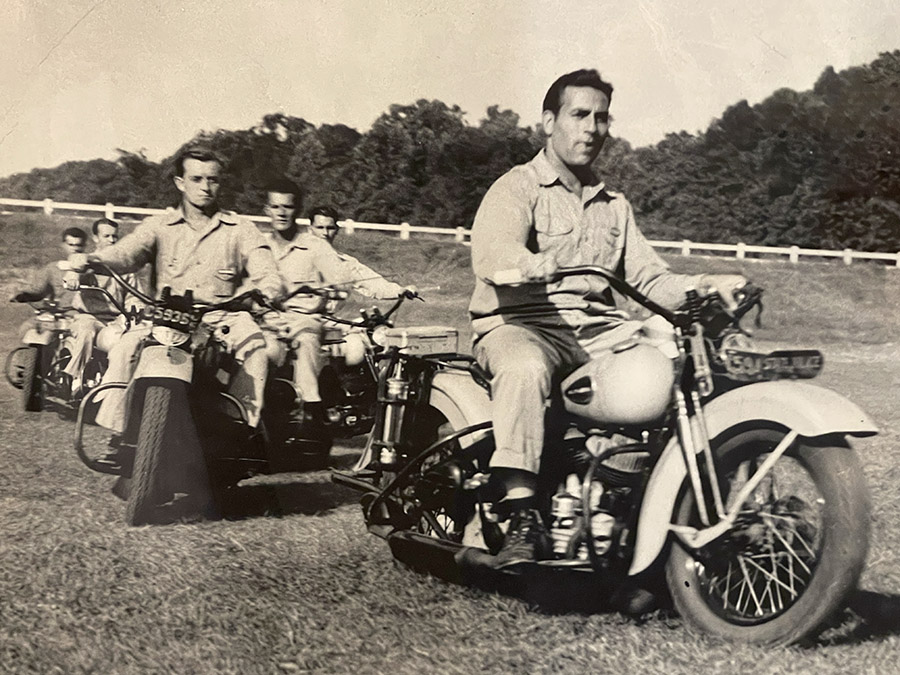

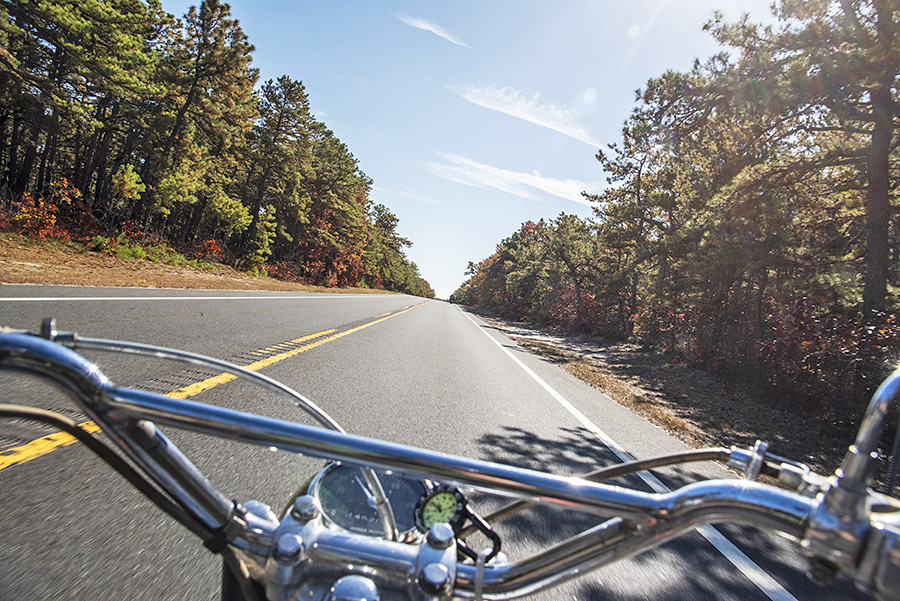
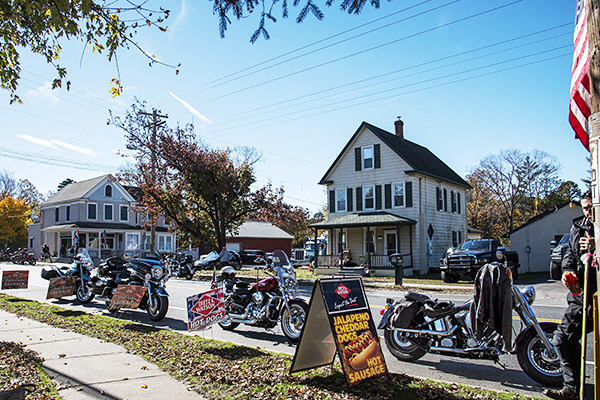
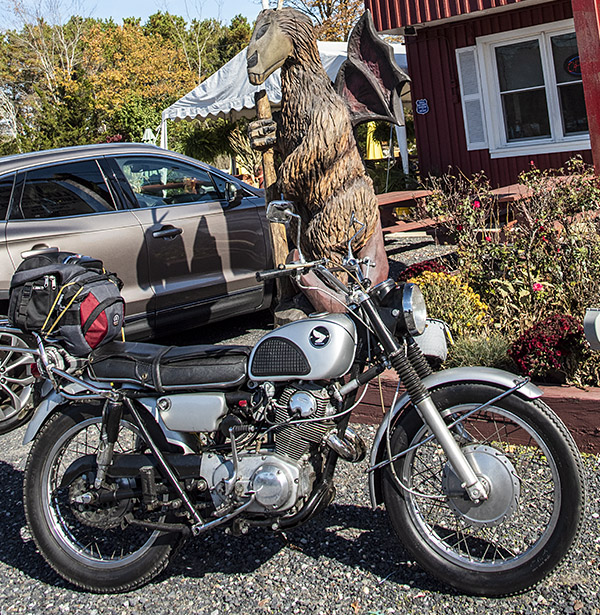
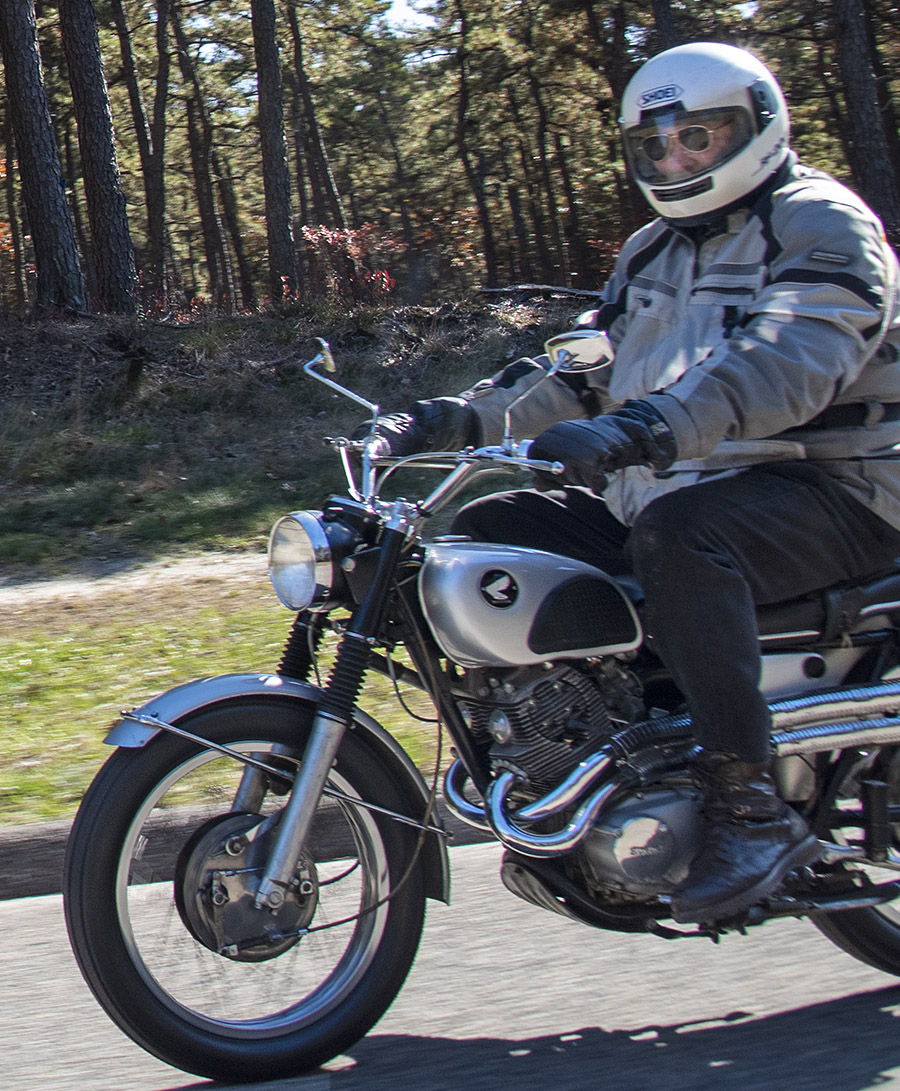
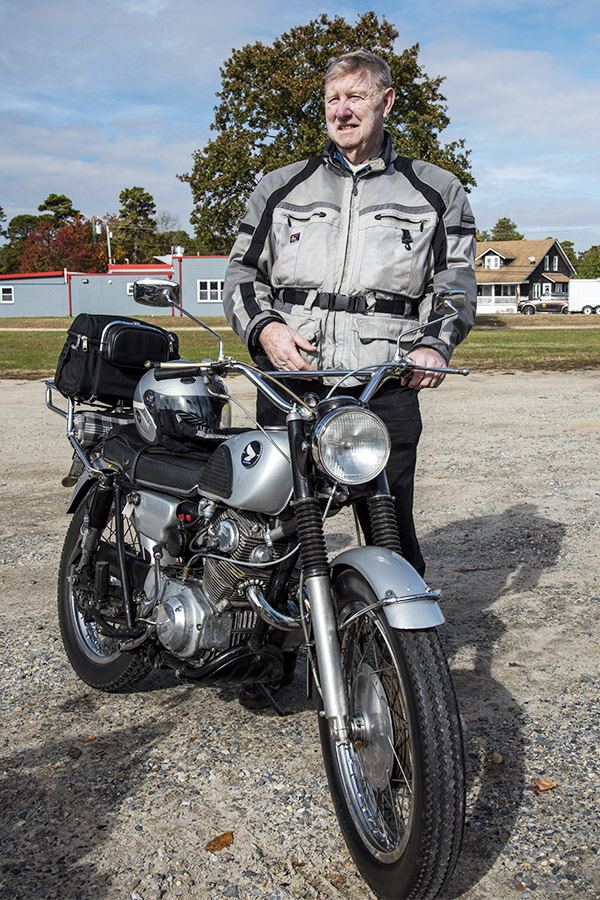
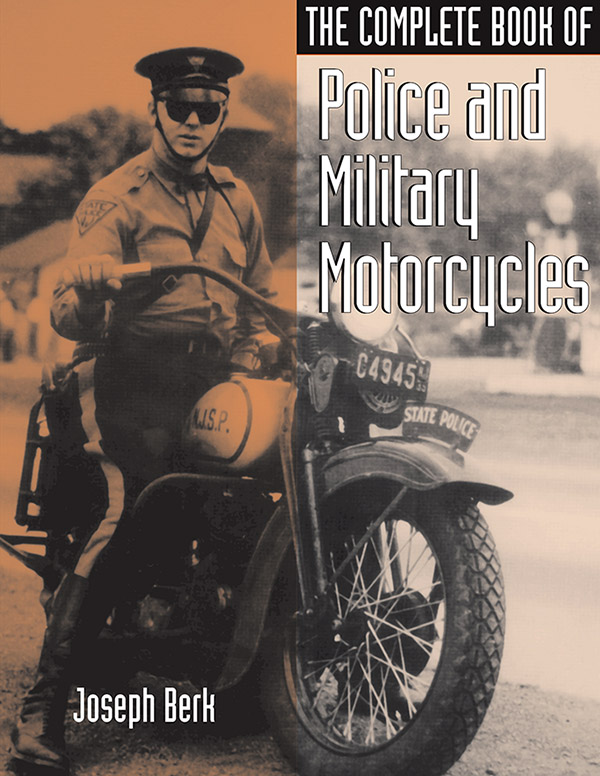
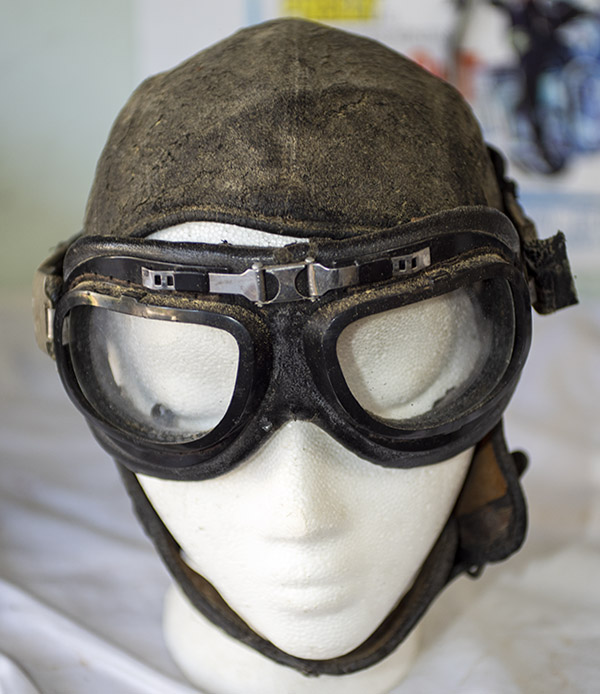
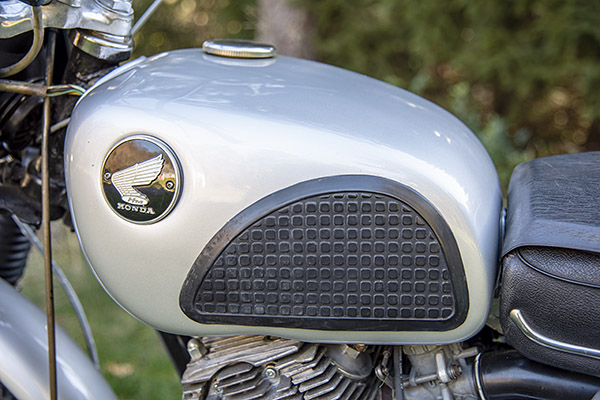
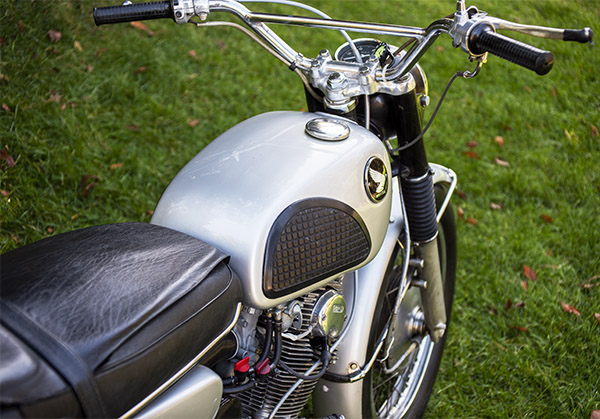
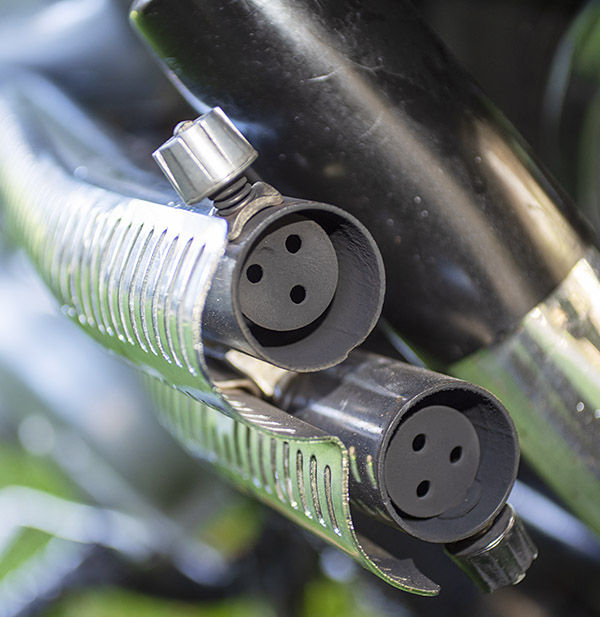
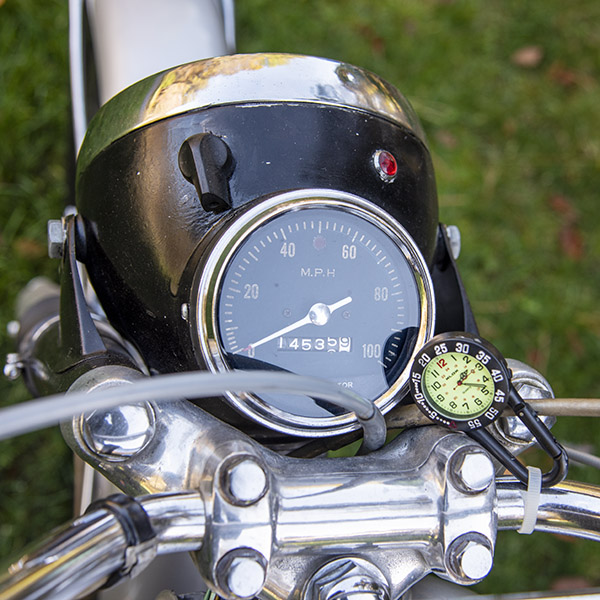
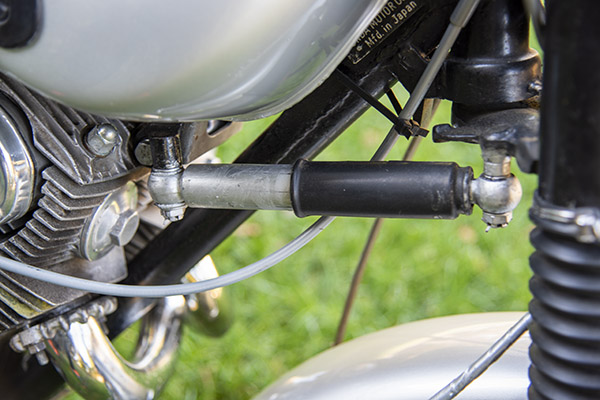

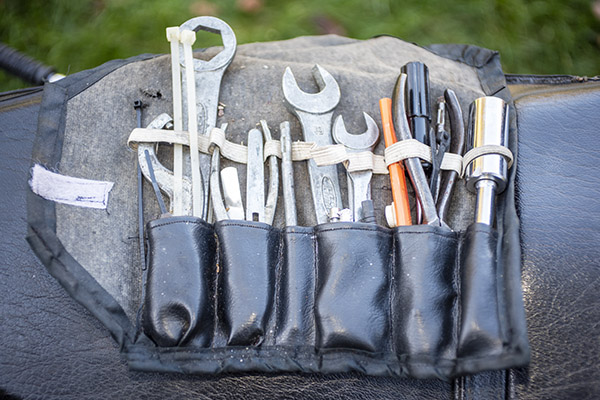

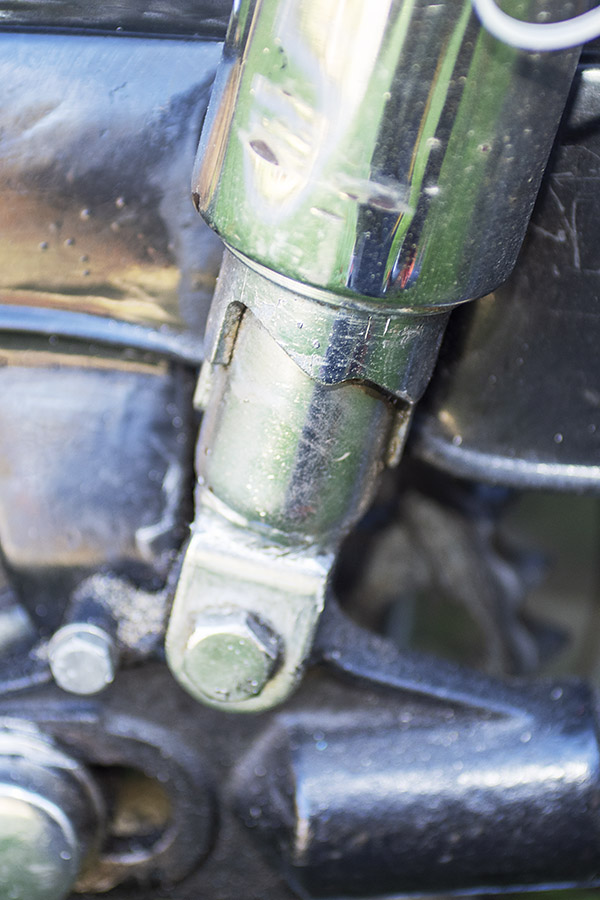
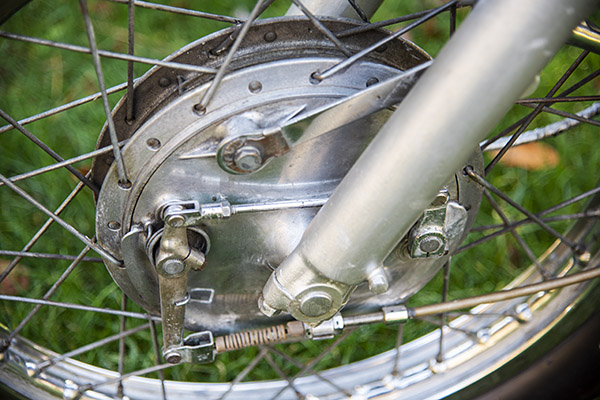
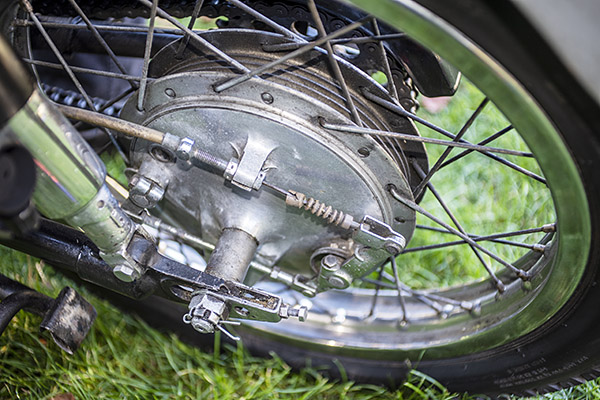
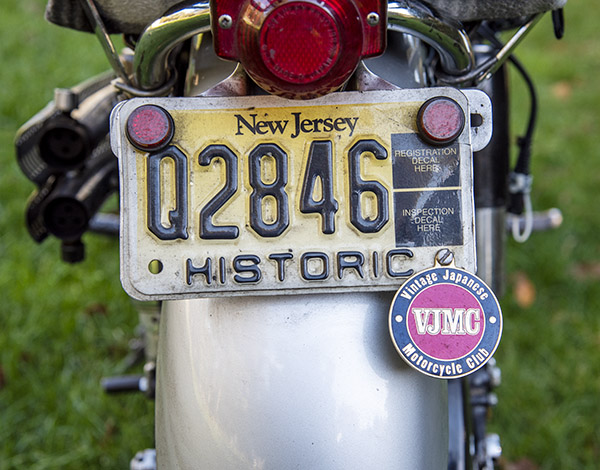
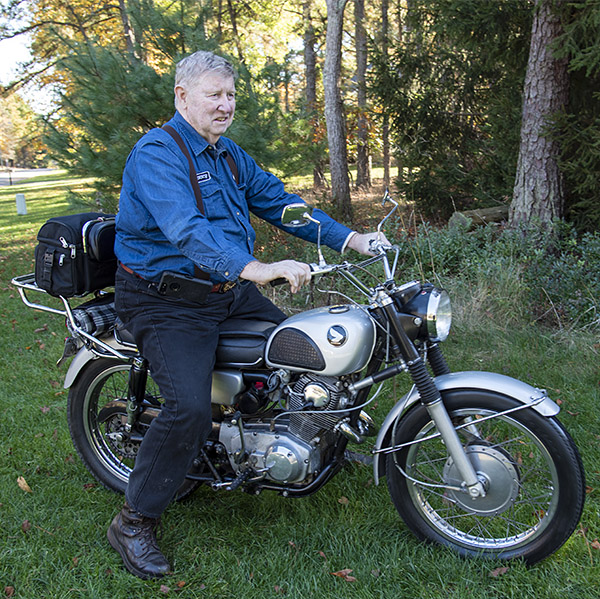
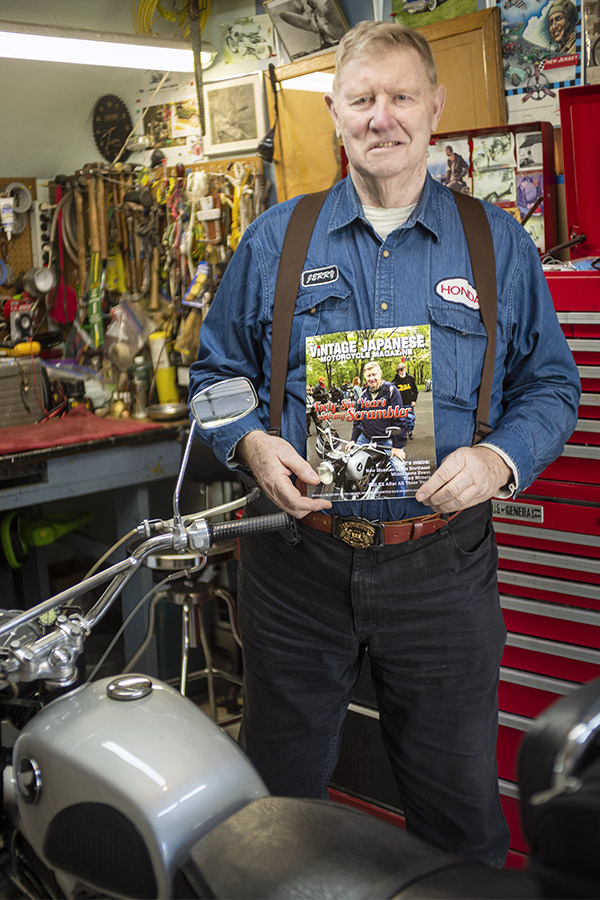




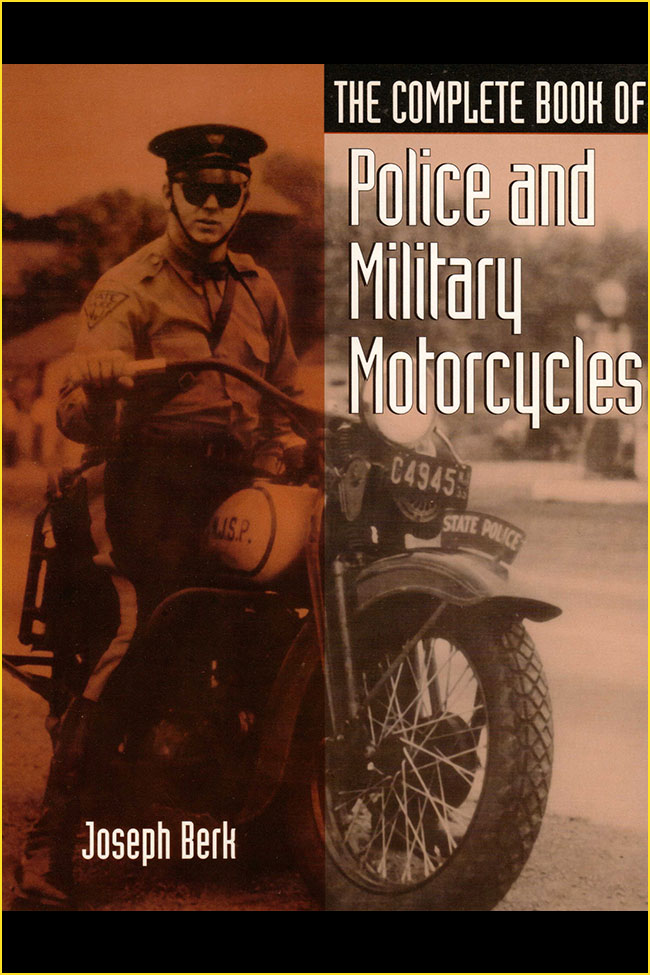
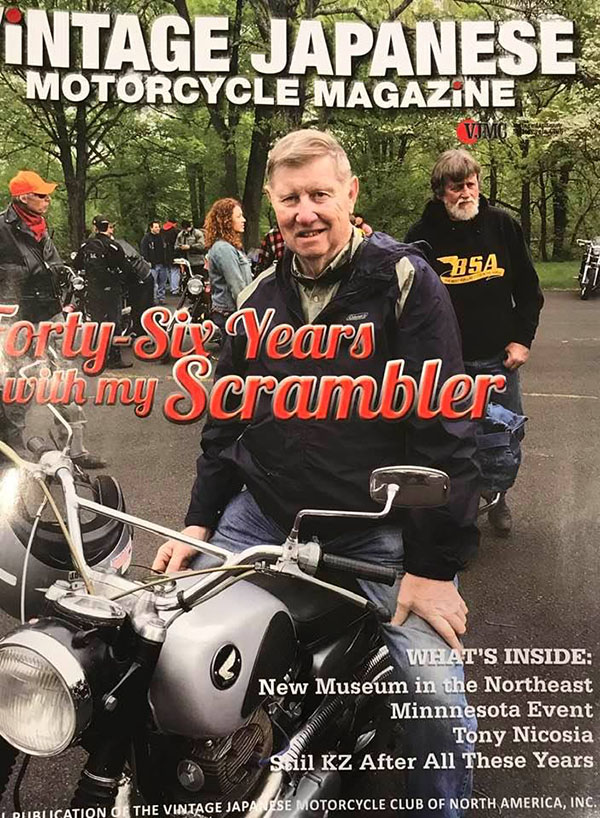
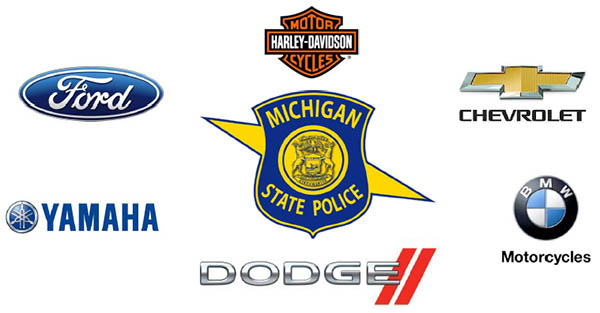
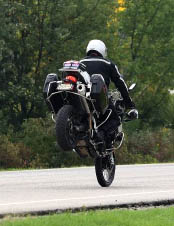
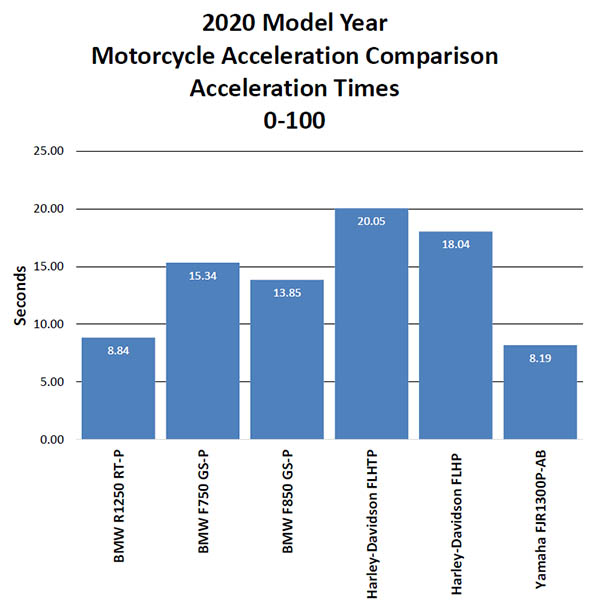
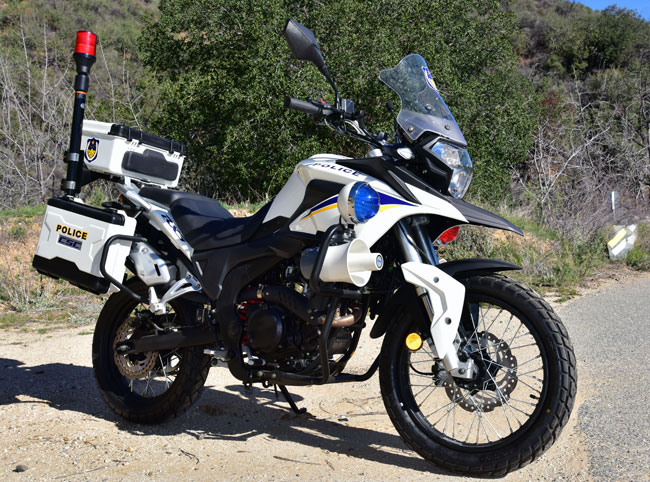 A few years ago when visiting the Zongshen plant in Chongqing, I spotted an RX3 set up as a police bike. It caught my eye for several reasons. First and foremost, it was a snappy looking motorcycle. I had written the
A few years ago when visiting the Zongshen plant in Chongqing, I spotted an RX3 set up as a police bike. It caught my eye for several reasons. First and foremost, it was a snappy looking motorcycle. I had written the 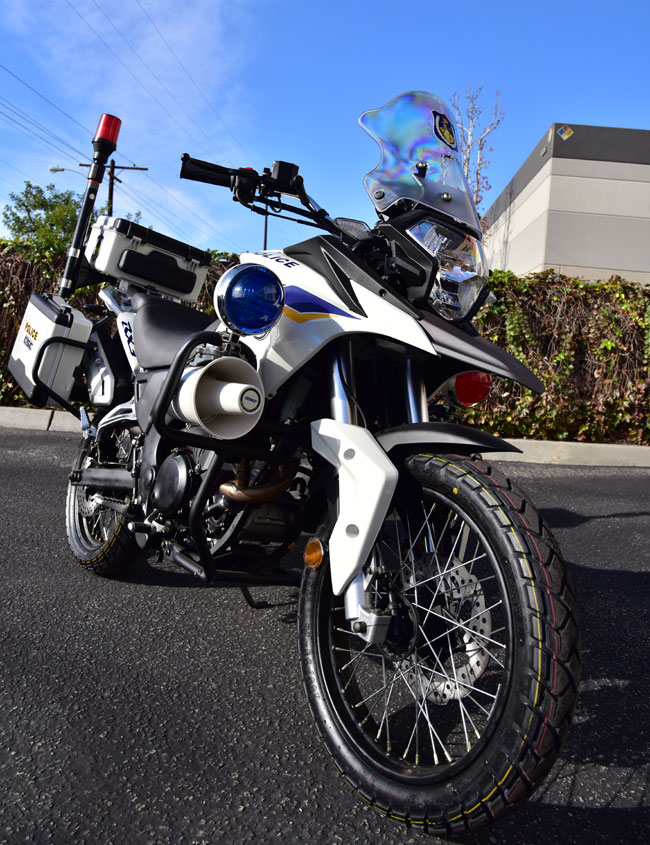
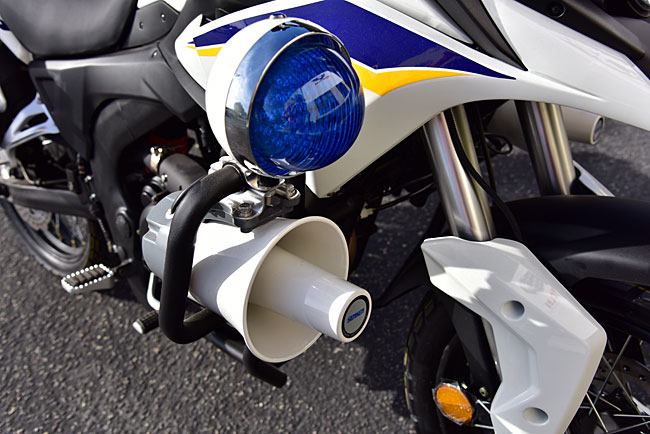
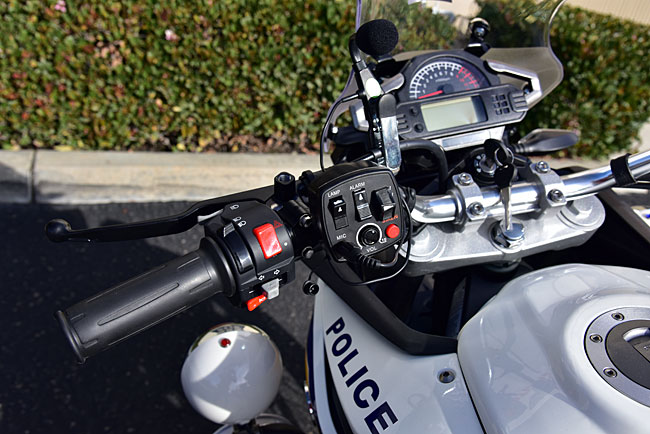 I was still pumped about the police bike, though, and I convinced CSC to bring the RX3-P to the US for a trial marketing period. You can see my enthusiasm in the video we put together on the bike…
I was still pumped about the police bike, though, and I convinced CSC to bring the RX3-P to the US for a trial marketing period. You can see my enthusiasm in the video we put together on the bike… We publicized the bike big time on the CSC blog, and I think that got noticed around the world. The RX3-P found a home with several large police departments in Asia and South America. That’s a good thing, because it’s a great bike. I’d still like to see it happen here in America. I imagine Zongshen will introduce a police version of their RX4, and maybe that larger bike will have a better chance at breaking into the US police motorcycle market. Someday. Maybe. We’ll see.
We publicized the bike big time on the CSC blog, and I think that got noticed around the world. The RX3-P found a home with several large police departments in Asia and South America. That’s a good thing, because it’s a great bike. I’d still like to see it happen here in America. I imagine Zongshen will introduce a police version of their RX4, and maybe that larger bike will have a better chance at breaking into the US police motorcycle market. Someday. Maybe. We’ll see. You can see how the public admire Guayasense, a motorcyclist and Lord of the Transit Commission of Guayas Province at that time.
You can see how the public admire Guayasense, a motorcyclist and Lord of the Transit Commission of Guayas Province at that time.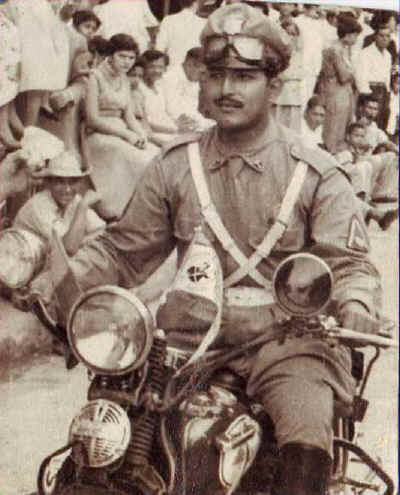 During the beginning 50 years, the Presidential Escort was established with the primary mission of escorting and providing security to the President and Vice-President of the Republic. They lit the alarm sirens, lights flashing resplendent in their motorcycles. The seated gentlemen guards were ordered in strategic caravans taking custody of the Presidential car with professionalism and responsibility.
During the beginning 50 years, the Presidential Escort was established with the primary mission of escorting and providing security to the President and Vice-President of the Republic. They lit the alarm sirens, lights flashing resplendent in their motorcycles. The seated gentlemen guards were ordered in strategic caravans taking custody of the Presidential car with professionalism and responsibility.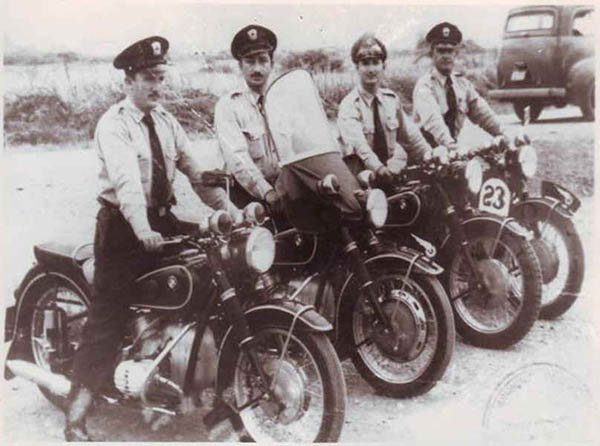 We appreciate the members of the Presidential Escort’s professionalism and accountability. Here they are with His Excellency, Mr. President of the Republic of Ecuador, Dr. Jose Maria Velasco Ibarra.
We appreciate the members of the Presidential Escort’s professionalism and accountability. Here they are with His Excellency, Mr. President of the Republic of Ecuador, Dr. Jose Maria Velasco Ibarra. Here we can see Vigilante Vicente Alvarado doing acrobatics and practicing on his motorized vehicle (motorcycle) at the start of the Training School of Presidential Escort.
Here we can see Vigilante Vicente Alvarado doing acrobatics and practicing on his motorized vehicle (motorcycle) at the start of the Training School of Presidential Escort.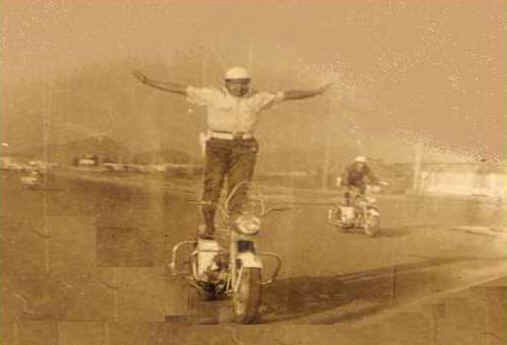 In the 80 years of its existence the Transit Commission has renewed its fleet by acquiring brand new 750 cc Suzuki motorcycles, which were used for the Presidential Escort. Here we see Mr. Transit Chief Mayor Jorge Peñafiel Ball, and Mr. Sub Chief Transit Mayor Carlos Palacios Torres.
In the 80 years of its existence the Transit Commission has renewed its fleet by acquiring brand new 750 cc Suzuki motorcycles, which were used for the Presidential Escort. Here we see Mr. Transit Chief Mayor Jorge Peñafiel Ball, and Mr. Sub Chief Transit Mayor Carlos Palacios Torres.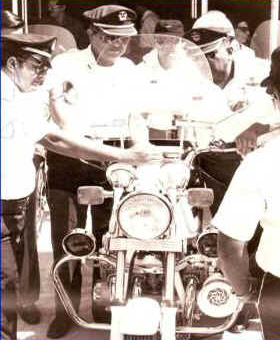
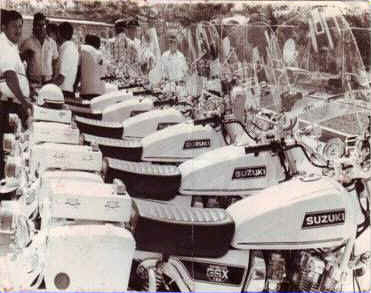 In the 1990s, the leading institution for transit renewed its fleet by acquiring 750 cc Honda motorcycles.
In the 1990s, the leading institution for transit renewed its fleet by acquiring 750 cc Honda motorcycles. In gratitude for the performance of motorcyclists who were part of the Presidential Escort, the department received Harley Davidson Motorcycles.
In gratitude for the performance of motorcyclists who were part of the Presidential Escort, the department received Harley Davidson Motorcycles.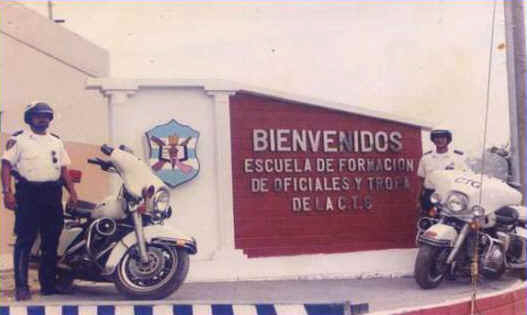 Festivities in Juliana’s staff. Here is 92 years of motorcycle experience in the Presidential Escort to the President of the Republic Arch Sixto Durán Ballén, from left to right subway. Miguel Leon Czech Subway. Miguel Rosero Huacón, Sgt. Ely Lopez Duran and subway. José Paredes Desiderio (current head of the Department Presidential Escort).
Festivities in Juliana’s staff. Here is 92 years of motorcycle experience in the Presidential Escort to the President of the Republic Arch Sixto Durán Ballén, from left to right subway. Miguel Leon Czech Subway. Miguel Rosero Huacón, Sgt. Ely Lopez Duran and subway. José Paredes Desiderio (current head of the Department Presidential Escort).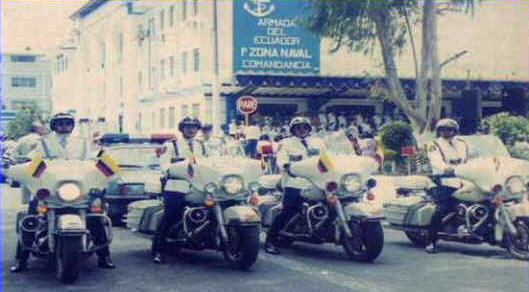 In 2004, the Transit Commission of Guayas Province acquires new motorcycles for the department of the Presidential Escort. These are the 1150 cc BMW brand.
In 2004, the Transit Commission of Guayas Province acquires new motorcycles for the department of the Presidential Escort. These are the 1150 cc BMW brand.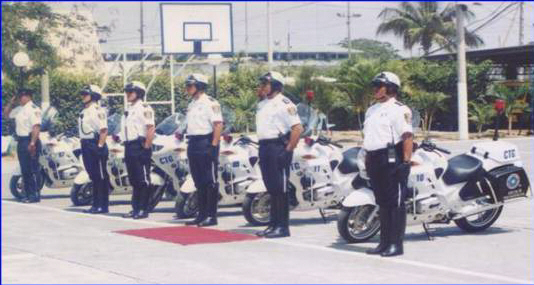 The Escort also received Suzuki Motorcycles of 500cc, which were acquired together with the BMW for the Department of the Presidential Escort CTG.
The Escort also received Suzuki Motorcycles of 500cc, which were acquired together with the BMW for the Department of the Presidential Escort CTG. Here are Motorcyclists who took part in the caravan escorting Mr. Former President of the USA George Bush during his visit to the city of Guayaquil.
Here are Motorcyclists who took part in the caravan escorting Mr. Former President of the USA George Bush during his visit to the city of Guayaquil. Here is the Head of Department (Cap. Jose Paredes Desiderio) planning with the class officers and gentlemen vigilant routes before a shift is going to escort some of the important people who visit the city of Guayaquil and Guayas Province.
Here is the Head of Department (Cap. Jose Paredes Desiderio) planning with the class officers and gentlemen vigilant routes before a shift is going to escort some of the important people who visit the city of Guayaquil and Guayas Province.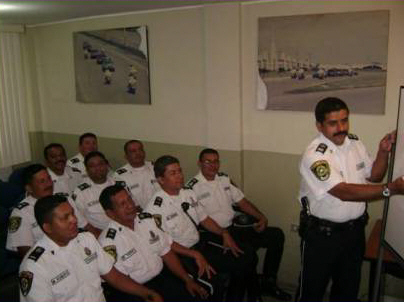 This is the Staff of the Presidential Escort doing acrobatics on BMW motorcycles.
This is the Staff of the Presidential Escort doing acrobatics on BMW motorcycles.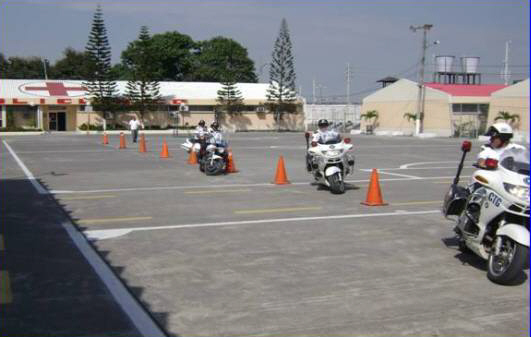
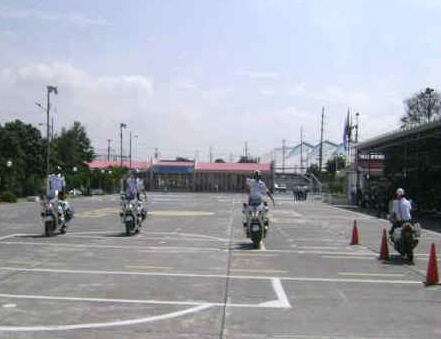 Like any other institution in the country and the world, women now form part of this great institution in the GUAYAS transit Commission. These beautiful and distinguished ladies who have the mystique and taste for wearing a uniform have the ability and skill to drive a motor vehicle, which has led them to join the select group of the Presidential Escort of the Province of Guayas.
Like any other institution in the country and the world, women now form part of this great institution in the GUAYAS transit Commission. These beautiful and distinguished ladies who have the mystique and taste for wearing a uniform have the ability and skill to drive a motor vehicle, which has led them to join the select group of the Presidential Escort of the Province of Guayas.
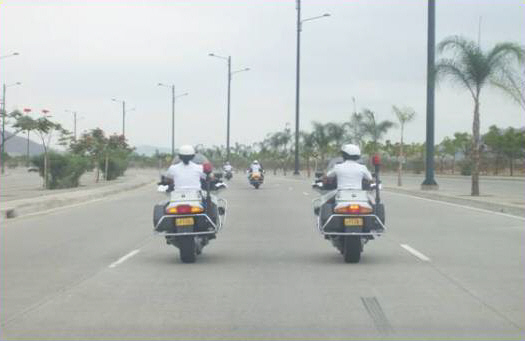 At present I am trying to communicate with police elsewhere in the world who are interested in training with modern techniques and exchange knowledge. We ask them to share their his knowledge by writing to my mail (jparedesd@ctg.gov.ec). If any groups use Harley Davidson, BMW, Honda, Suzuki, etc. and would like to educate two members of this institution which I represent I ask you to contact me.
At present I am trying to communicate with police elsewhere in the world who are interested in training with modern techniques and exchange knowledge. We ask them to share their his knowledge by writing to my mail (jparedesd@ctg.gov.ec). If any groups use Harley Davidson, BMW, Honda, Suzuki, etc. and would like to educate two members of this institution which I represent I ask you to contact me.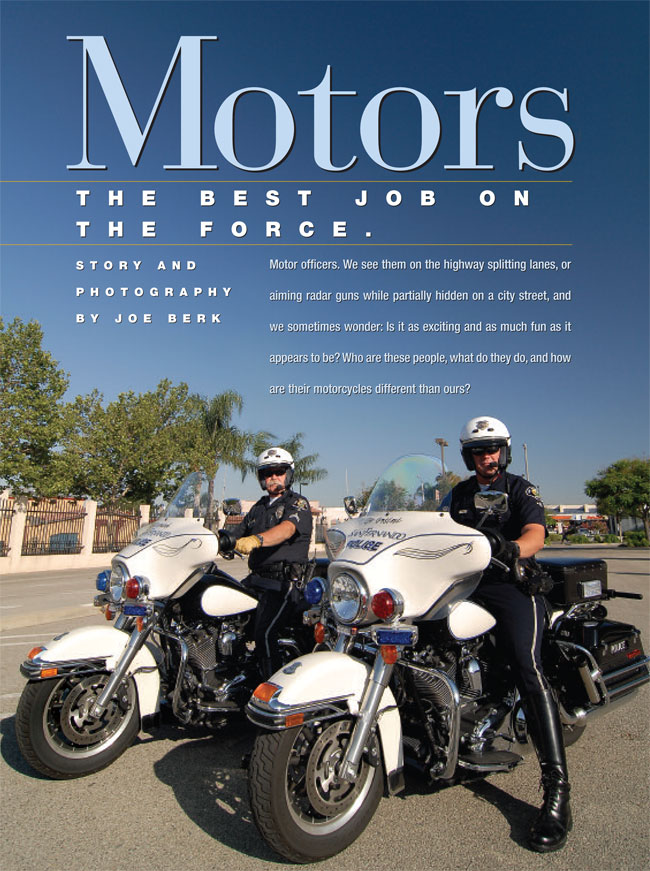
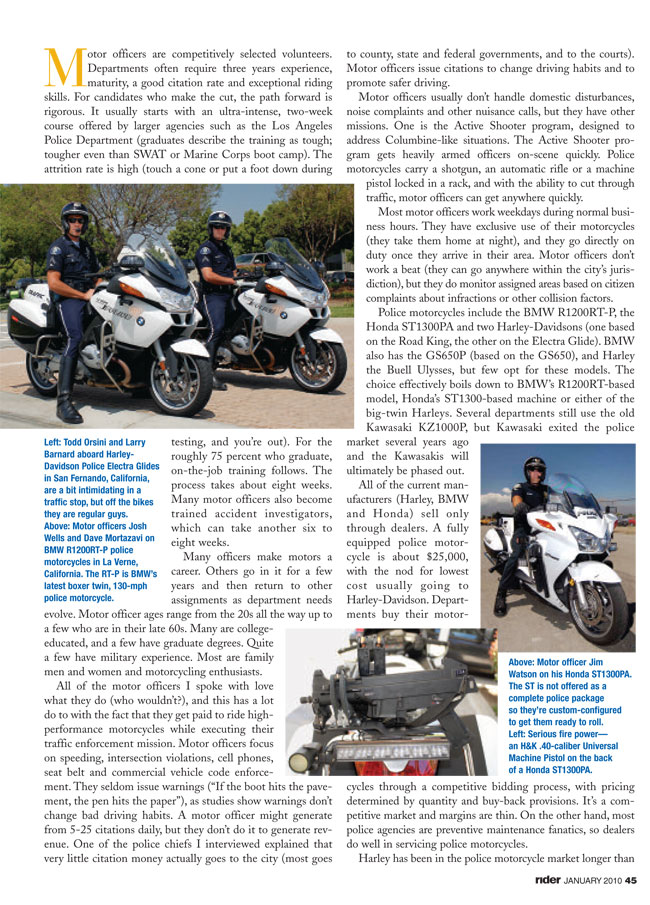
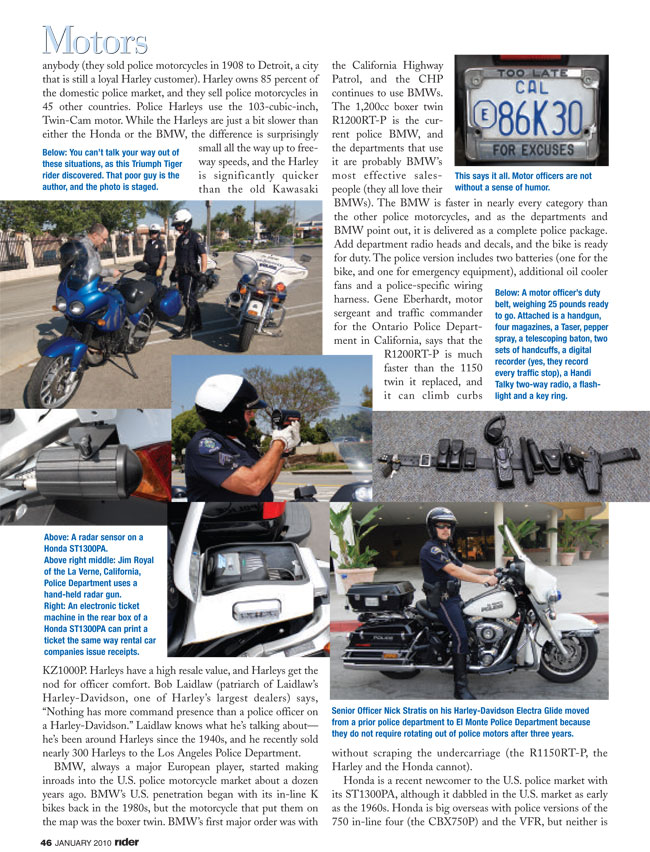
 I staged one of the photos above to show a couple of San Fernando Valley police officers stopping me on my Triumph Tiger. That was one of the most interesting parts of the research. I interviewed the two SFV officers in the police station and they were regular guys. Joking, telling stories, you know the drill. I was having fun listening to them and trying to capture it all in my notes. One of the officers suggested going outside for more photos, and with that, both of them put on their helmets and sunglasses. The transformation was dramatic. With their helmets off, they were two regular (and different) guys. When the helmets and shades went on, they became RoboCop. They were indistinguishable, all business, no room for nonsense. Serious. Emotionless. No more smoking and joking. The real deal.
I staged one of the photos above to show a couple of San Fernando Valley police officers stopping me on my Triumph Tiger. That was one of the most interesting parts of the research. I interviewed the two SFV officers in the police station and they were regular guys. Joking, telling stories, you know the drill. I was having fun listening to them and trying to capture it all in my notes. One of the officers suggested going outside for more photos, and with that, both of them put on their helmets and sunglasses. The transformation was dramatic. With their helmets off, they were two regular (and different) guys. When the helmets and shades went on, they became RoboCop. They were indistinguishable, all business, no room for nonsense. Serious. Emotionless. No more smoking and joking. The real deal.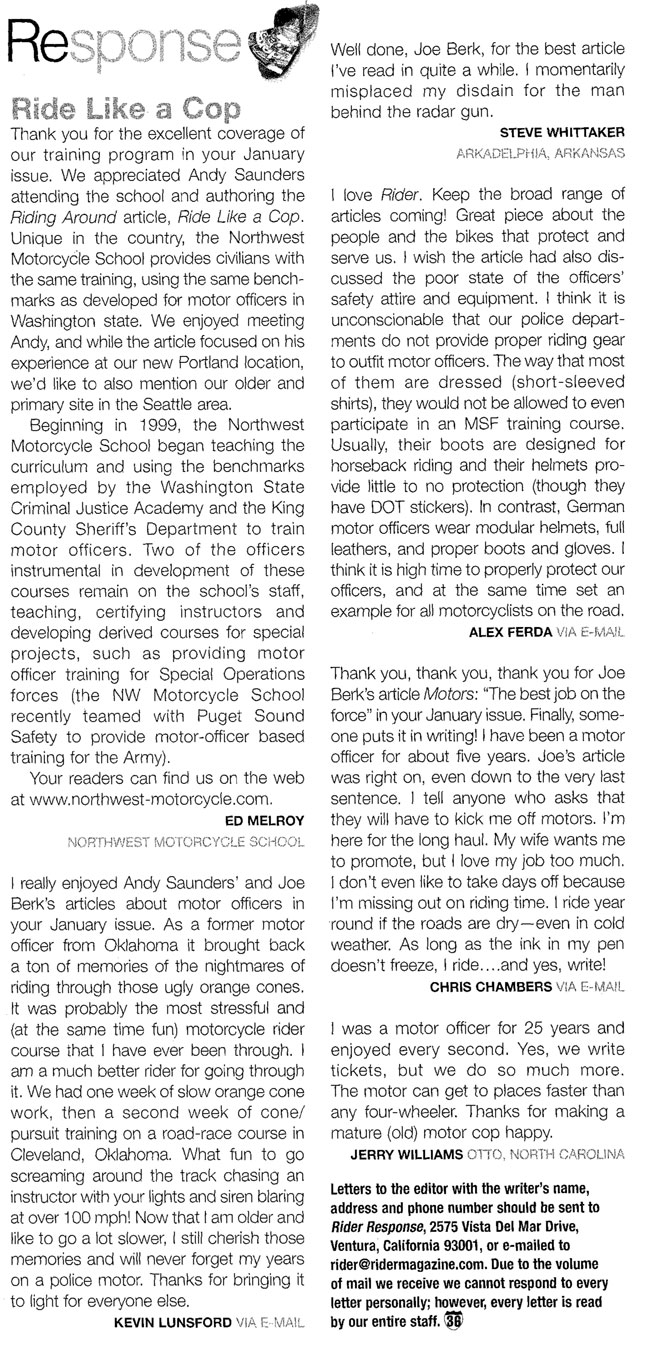 Fun times, to be sure. I really enjoyed doing that story, and before we wrap up this blog, here’s another bit of trivia: I first saw “Motors” in print while recovering from a motorcycle accident (I got busted up pretty good and I had a lot of time to catch up on my reading). The first responder on that one was Jim Royal, a La Verne, California, motor officer. Just a few weeks before my crash I shot photos of Jim for this very story. One had Jim holding a radar gun; it’s the photo you see in the article above.
Fun times, to be sure. I really enjoyed doing that story, and before we wrap up this blog, here’s another bit of trivia: I first saw “Motors” in print while recovering from a motorcycle accident (I got busted up pretty good and I had a lot of time to catch up on my reading). The first responder on that one was Jim Royal, a La Verne, California, motor officer. Just a few weeks before my crash I shot photos of Jim for this very story. One had Jim holding a radar gun; it’s the photo you see in the article above.